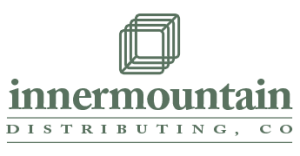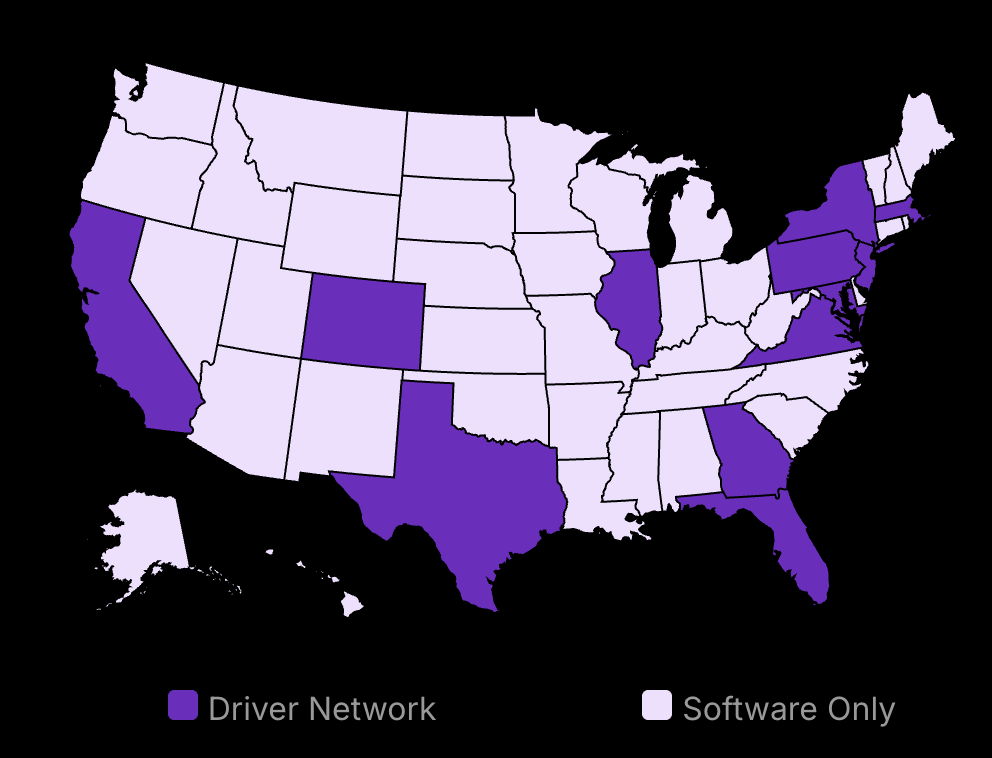Retail management is not your typical walk in the park. It’s a challenging role filled with dynamic responsibilities. Curious about how to be a successful retail manager? You’re in the right place. Key retail management skills, like communication, leadership, and financial wisdom are your essential tools. In this blog, you’ll unpack crucial techniques to streamline operations, enhance customer experience, and use tech to your advantage.

Metrobi drivers are rated 4.97 out of 5
Trusted by local businesses for:
- Background-checked professionals
- Specialized in business deliveries
- Same drivers for consistency
- 4.97/5 average delivery rating
Step 1: Building Core Retail Manager Skills 2024
Communication and Interpersonal Skills of Retail Managers
Effective communication forms the backbone of a successful retail operation. Clear, direct communication with both staff and customers cultivates a positive work environment. It also enhances customer satisfaction. As a retail manager, your interactions set the tone for your store. Transparent dialogue ensures that everyone understands their role and responsibilities as good retail managers.
Improving Interpersonal Relations
To foster strong relationships in a retail store manager’s setting, techniques like active listening and empathy are essential. Active listening involves attentively hearing what the other person is saying and responding thoughtfully. Empathy allows you to connect on a personal level, understanding both customers’ and employees’ perspectives. Building these connections not only satisfies customers but also maintains a motivated team.
Leadership and Team Management
In managing a successful retail manager or team, strategies to motivate and lead diverse groups are paramount. Leading by example, setting realistic goals, and recognizing achievements can energize your workforce. Additionally using online team calendar, team management and communication tools can streamline collaboration and keep everyone aligned on deadlines and priorities.
Motivating a Diverse Team
Diverse teams bring varied perspectives, enriching the work environment. However, managing them requires tailored strategies. One effective method is focusing on inclusivity, ensuring that all voices are heard. Encourage team members to share ideas and be involved in decision-making processes to enhance employee engagement and innovation.
Managing Performance and Development
Performance management should not feel punitive. Instead, it’s a tool for growth. Regular feedback sessions, both in retail managers’ work formal and informal, provide opportunities for coaching and development. You should consider offering personalized development plans that help employees align their growth with the store’s objectives.
Financial Acumen
A strong understanding of financial principles can significantly impact store success. Familiarity with budgets, sales targets, and financial reports lets managers make informed decisions. This financial literacy allows for more strategic thinking, leading to improved cost efficiency and profit maximization.
Analyzing Financial Reports
Regular review of financial reports helps managers identify trends and areas needing adjustment. By analyzing sales metrics, costs, and profitability, you can design strategies that align with the store’s financial goals.
Step 2: Essential Tips for Retail Industry Management
Streamlining Operations
Efficient operations are the backbone of any successful retail store management. It’s about making processes smoother to save time and money.
Techniques for Efficient Inventory Management
Inventory management is vital. Start with real-time data systems. They cut inventory costs by up to 15% and can boost sales by 10%. This means using software that tracks stock in real time. Tools like these help to keep shelves stocked without overordering. You should consider setting clear reorder points. When stock reaches a certain level, reorder before it’s too late. Regular checks allow for quick reaction to changes in customer demand, avoiding unnecessary overstock or risky stockouts.
Tips for Optimizing Daily Operations to Save Time and Resources
Simplifying everyday tasks can free up time for more challenging areas. First, you should outline daily priorities for staff. Prioritized tasks ensure essential duties get done. You can implement automation for repetitive activities like ordering supplies and employ scheduling tools for shifts, reducing last-minute conflicts. You want your team focused on strategy, not paperwork. Data is your friend here — real-time insights drive better decision-making and ensure that operations run smoothly. Plus, consistent performance assessments guarantee alignment with larger business goals. Looking to elevate your store’s daily operations? Adopt these strategies for managing retail that focus on simplification and efficiency, ensuring your team can devote more energy to strategic growth.
Enhancing Customer Experience
A good efficient customer service experience isn’t just chatty staff; it’s about real connections and thoughtful feedback action.
Approaches to Improve Customer Service and Satisfaction
Engage customers meaningfully. Staff should show genuine care perhaps with personalized services. Damon Richards said, “Your customers don’t care how much you know until they know how much you care.” Make service a memorable part of shopping. You should train staff to listen and respond effectively. Empathy in customer interactions can transform ordinary service into something exceptional.
Tools for Collecting and Acting on Customer Feedback
Your customers’ opinions are your guiding light. You should use feedback forms or digital surveys at checkout points to gather information. This ensures customer voices are heard. You can analyze this feedback regularly. You can adjust strategies based on recurring themes or insights. Are customers preferring more sustainable product options? It is better to react proactively and make those changes. This cycle enhances satisfaction by showing customers you care about their input and acting accordingly.
Effective Staff Training and Development
Your team’s ability is the greatest tool. Consistent training is key to growing those skills. Here’s a breakdown of what works.
Best Practices for Onboarding and Continuous Training
The first days in a retail store can be daunting for newcomers. Your onboarding should simplify this. You can create a structured plan for their first few weeks. You should clearly outline roles and expectations. You can use a buddy system, pairing newcomers with veterans. This harnesses existing knowledge and builds team rapport. Continuous learning is crucial. Regular workshops, short training sessions, and learning management systems are practical tools for keeping skills sharp and relevant.
Methods for Setting Clear Goals and Performance Metrics
Goal-setting provides direction in people management. Set SMART goals (Specific, Measurable, Achievable, Relevant, Time-bound) to guide staff. You can start with clear objectives at the beginning of each quarter. It is better to review performance with consistent metrics. Numbers speak volumes; utilize data to support observations during evaluations
Step 3: Insights for Effective Store Management
-
Use technology to boost operations and improve results.
-
Master the art of store layout and promotions to attract more customers.
-
Understand key skills and qualities needed to excel as a manager.
Utilizing Technology in Retail Store Manager
Overview of Current Tech Tools That Assist in Store Management
In the fast-paced retail world, technology acts as an anchor. It’s no longer a choice but a necessity for effective store management. Tools like Oracle Data Platform and Databricks provide solutions for analyzing real-time data. These platforms help store managers stay on top of inventory, customer behavior, employee performance, and overall operational efficiency. Emphasizing the integration of such tools can transform how decisions are made, offering a more data-centered approach. Looking to elevate the efficacy of your retail operations? Putting into practice effective strategies for retail management could be the key to optimizing your processes and intensifying overall efficiency.
Implementing Digital Solutions to Streamline Operations
Introducing the right digital tools can reduce friction in in-store operations. Inventory management systems that provide real-time data ensure that you have a precise understanding of stock levels. This minimizes the risk of stockouts or overstocking. For instance, integrating digital solutions such as warehouse management systems (WMS) can seamlessly link back-office operations with the shop floor, making adjustments in real time as needed. Utilizing tools that learn customer preferences can also shape how products are displayed, increasing cross-selling opportunities.
Visual Merchandising
Basic Principles of Effective Store Layout and Design
Visual merchandising is fundamental for capturing customer interest. Effective store layout involves understanding how customers interact with space and adjusting for the most engaging experience. You can begin with clear pathways that guide customers through featured products. You can use focal points with lighting and creative displays to direct attention where it’s most needed.
Creative Display Ideas That Attract and Retain Customer Interest
Beyond basic store layouts, creative displays hold their charm. You can use themes that change seasonally or align with current trends to keep displays fresh. Interactive displays that encourage touch or exploration can significantly boost customer engagement. It is better to think about integrating technology into these displays, such as QR codes for quick access to information or even augmented reality features.
Managing Store Promotions
Strategies for Planning and Executing Successful Store Promotions
Promotion strategies that align with customer needs can drive significant in-store traffic. The key is to plan promotions that resonate with your target audience. You can evaluate past promotions and adjust based on customer feedback and market trends. You can utilize social media heavily to spread word-of-mouth and offer digital exclusives to bring people into physical stores. You should consider collaborating with local influencers or complementary businesses for co-promotions. “You cannot run a successful retail business from memory,” echoes Josh Hartford, highlighting the need for strategic planning.
Techniques for Measuring the Effectiveness of Promotions
Once a promotion is executed, it’s crucial to measure its effectiveness. You should utilize analytics tools to track key performance indicators such as foot traffic, sales lift, and customer feedback during the promotional period. Real-time feedback loops are invaluable here; platforms provide dashboards for real-time store monitoring. After assessing, compile insights to inform future promotional strategies.
By embracing advanced tech solutions, refined visual merchandising, and strategic promotions, store managers can elevate store effectiveness, drive sales, and foster a compelling customer experience. Each aspect interlinks, contributing to an effective retail and management ecosystem that allows retail managers to thrive.
Ready to Lead Retail in 2024?
Mastering communication, leading your team, and understanding finances and effective retail management are your building blocks. You should refine operations and enhance customer experience with tech and training. You should embrace change, foster sustainability, and handle challenges like tough customers or stock hiccups head-on.
Recognizing these skills’ value is key to shaping successful retail operations and futures. So, It is better to start by honing communication with your team today. You should dive into tech tools that fit your store’s needs and examine your financials to spot areas for growth.
What strategies will you implement to motivate your retail team this quarter?
Remember, your role as a retail manager shapes not just the retail sales representatives, but the entire store experience. Ready to make an impact?


























